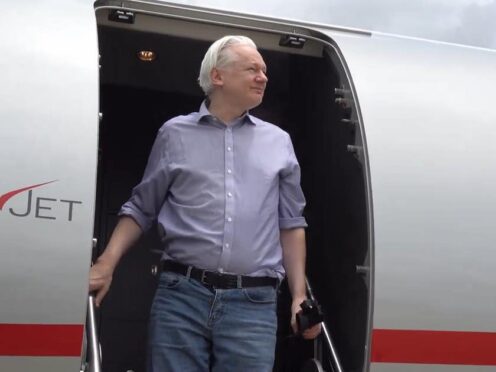Julian Assange’s bail hearing was requested to be heard in secret as his plea agreement was “confidential and sensitive in terms of national security for the US”, a judicial spokesperson has said.
The WikiLeaks founder flew into his native Australia on Wednesday a free man after a two-hour court appearance before a judge in the US territory of the Northern Mariana Islands in the Pacific just after midnight, where he pleaded guilty to a single charge after the US dropped 17 other espionage charges against him.
It comes after an extraordinary few days following his dramatic release from Belmarsh Prison in London on Monday, in the wake of the plea agreement being signed on June 19 and a bail hearing which was heard in private the next day at Westminster Magistrates’ Court.
Details of the bail hearing have been shrouded in secrecy, with the Crown Prosecution Service (CPS) refusing to provide information – other than the date on which it was held in private and the location – and court listings staff having no knowledge of it and unable to find any record of it taking place.
It has now been revealed the “urgent” bail application was requested to be heard in private under Criminal Procedure Rules on the grounds that “the plea agreement between the US and Julian Assange was confidential and sensitive in terms of national security for the US”, a judicial spokesperson said.
The chief magistrate, senior district judge Paul Goldspring, granted a private hearing “to protect the administration of justice”, “that similar protection had already been granted in the US proceedings and both the administration of justice and the interests of justice would be compromised if the details were made public”, the spokesperson added.
The bail application was supported by the US and conditional bail was granted.

A judicial spokesperson said: “On Wednesday 19th June, the court was asked to list an urgent bail application in private, pursuant to Cpr 14.2(2) on the grounds that the plea agreement between the US and Julian Assange was confidential and sensitive in terms of national security for the US.
“Having considered the application, which was supported by the US, senior district judge Goldspring, chief magistrate, granted a private hearing on the grounds that it was necessary to derogate from usual open justice principles to protect both the administration of justice, (the plea deal was at risk of collapse if it became public knowledge), that similar protection had already been granted in the US proceedings and both the administration of justice and the interests of justice would be compromised if the details were made public.
“At the hearing on the 20th June, the application for bail was supported by the US and granted. It was clear that it was in Julian Assange’s interests to comply with the proposed conditions, which, if he did, would result in the withdrawal of the US extradition request and the end of proceedings before our courts.
“Conditional bail was therefore granted by the chief magistrate.”
